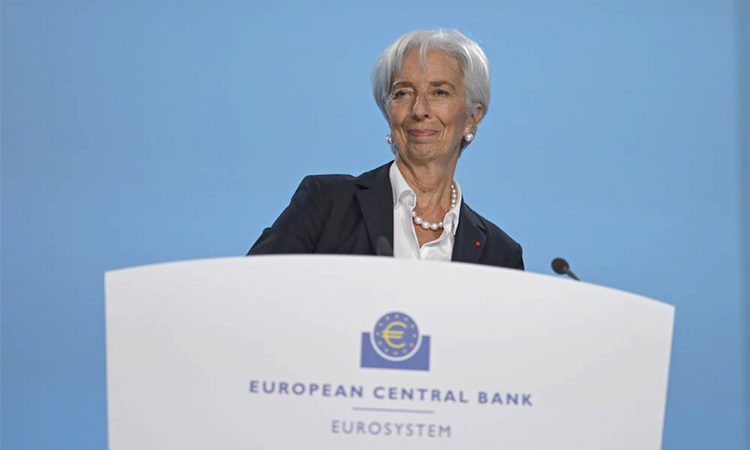Debt burden on Greece reaches 181.1 per cent of GDP in 2018

A man waits at a PPC branch to enter a repayment scheme for their debts in Athens, Greece. Reuters
The widening gaps in Greece and Italy, although expected, are seen as stretching EU fiscal rules that require countries with high debts to gradually bring them down.
The overall debt in the 19-country currency bloc fell to 85.1 per cent of gross domestic product (GDP) last year from 87.1 per cent in 2017, European Union statistics office (Eurostat) said.
The bloc’s aggregated budget deficit also dropped to 0.5 per cent of GDP from 1.0 per cent in 2017.
The fall coincided with Germany’s reduction of its debt to 60.9 per cent of GDP from 64.5 per cent. The bloc’ largest economy also widened its public surplus to 1.7 per cent of output from 1.0 per cent in 2017.
But in Greece, the debt climbed to 181.1 per cent of GDP in 2018, the largest ratio in the eurozone.
The increase from the 176.2 per cent figure Athens posted in 2017 was mostly due to the last instalment of eurozone creditors’ loans as part of the country’s third bailout programme which ended last summer.
The bailout programme exempts Greece from the normal application of EU rules that require cuts of public debt by 1/20th a year of the excess above the 60 per cent of GDP upper debt threshold allowed by EU law.
Italy, whose eurosceptic government embarked last year on free-spending plans with little impact on growth, has seen its debt grow to 132.2 per cent of its output in 2018 from 131.4 per cent in the previous year.
The European Commission, in charge of monitoring eurozone states’ budgets, refrained in December from starting disciplinary steps against Italy’s over its growing debt.
But it then predicted that the debt would be at 131.1 per cent of Italian GDP in 2018.
The Commission has said it would against assess Rome’s compliance with EU fiscal rules, including the requirement to cut debt, in June after taking into account the final debt data from Eurostat, its own forecasts for debt developments due in May and Italy’s report on fiscal plans for the next three years.
Rome’s growing debt, which is also higher than Brussels had predicted, is seen as further stretching EU fiscal rules that require countries with high debts to gradually bring them down.
Italy, whose eurosceptic government adopted free-spending policies last year that have so far had little impact on growth, had debt equivalent to 132.2 per cent of national output in 2018, up from 131.4 per cent in the previous year, Eurostat said.
The European Commission, which monitors eurozone states’ budgets, refrained in December from starting disciplinary steps against Italy over its growing debt.
It predicted then that Italian debt would be 131.1 per cent of gross domestic product in 2018 − lower than Tuesday’s data showed.
The Commission has said it will reassess Rome’s compliance with EU fiscal rules, including the requirement to cut debt, in June, taking into account the final debt data from Eurostat.
Its new evaluation will also be based on fresh forecasts due in May of debt developments in eurozone countries, and on Italy’s report on its fiscal plans for the next three years which should be submitted to Brussels by the end of April.
Italy bucked the eurozone trend, as overall debt in the 19-country currency bloc fell to 85.1 per cent of GDP last year from 87.1 per cent in 2017, Eurostat said.
The bloc’s aggregated budget deficit also dropped to 0.5 per cent of GDP from 1.0 per cent in 2017. The fall coincided with Germany’s reduction of its debt to 60.9 per cent of GDP, from 64.5 per cent in 2017.
Reuters







